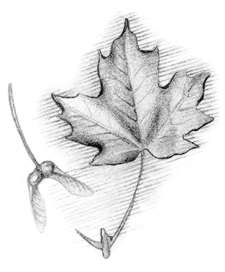 Daniel
Boone Native Gardens
Daniel
Boone Native Gardens  Daniel
Boone Native Gardens
Daniel
Boone Native Gardens [Fig. 8(9)] The lore and legacy of the great frontiersman Daniel Boone lives on at Daniel Boone Native Gardens, located near his famed Wilderness Road. A wrought- iron gate at the entrance of the 6-acre gardens was a gift from Daniel Boone VI, a direct descendant of the legendary pioneer. The extensive collections of native plants grow much as they would have when the region was still wild. Informally landscaped with trails, ponds, and split-rail fences, the gardens feature North Carolina native plants (many marked for easy identification) such as spring's nodding trillium (Trillium cernuum), bloodroot (Sanguinaria canadensis), and yellow lady slipper (Cypripedium calceolus). A splash of color ushers in summer when the flame azalea (Rhododendron calendulaceum), rhododendron, butterfly weed (Asclepias tuberosa), and fiery red cardinal flower (Lobelia cardinalis) bloom. Goldenrod (Solidago roanensis, named for Roan Mountain where it was presumably first discovered) and aster (Aster curtisii) bloom from late summer into autumn, when the fall foliage extravaganza steals the show across the horizon. The gardens also serve as a haven for small mammals and birds native to or migrating through the Blue Ridge.
The Daniel Boone Native Gardens are adjacent to Horn in the West, an outdoor drama depicting Daniel Boone and the Mountain Men in their struggles toward independence and frontier settlement. Hickory Ridge Homestead, a living museum of early mountain life and culture, shares the grounds where costumed interpreters offer demonstrations in weaving, spinning, candlemaking, and other crafts.
Read and add comments about this page